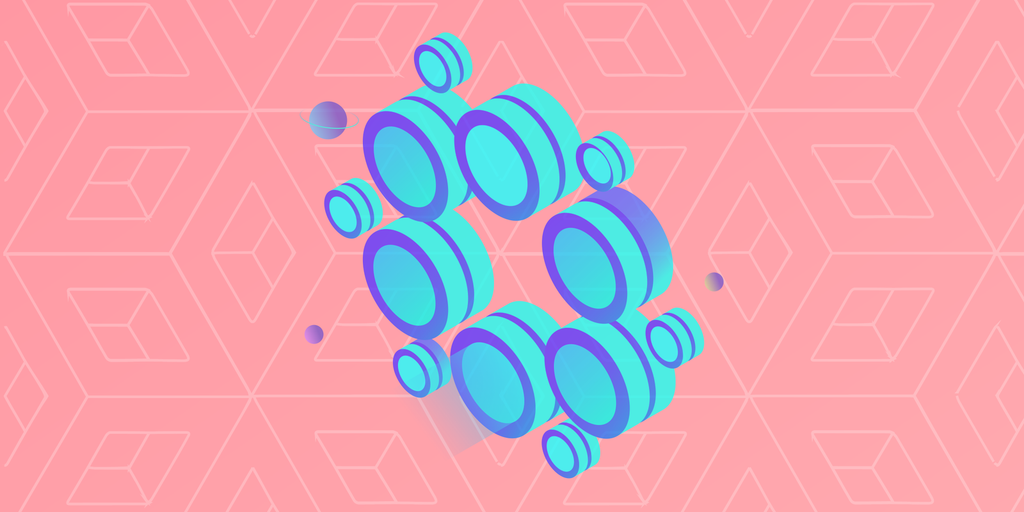What is Cardano?
Cardano is a proof-of-stake blockchain that builds on peer-reviewed research developed using a methodical, academic approach.
It positions itself as a third-generation blockchain designed to improve upon the technology behind Bitcoin (first generation) and Ethereum (second generation) by addressing their scalability, security, and sustainability.
With its focus on formal verification and peer-reviewed advancements, Cardano aims to provide a sustainable and interoperable blockchain ecosystem suited for enterprises, governments, and financial institutions.
Below, we will explore the key components of the Cardano blockchain.
Who created Cardano?
Cardano was founded in 2015 by Ethereum co-founder Charles Hoskinson. It was developed by Input Output Global in collaboration with the Cardano Foundation and blockchain developer Emurgo.
After two years of research and development, Cardano launched in 2017 with the Byron era. This phase introduced the ADA cryptocurrency and the Ouroboros proof-of-stake consensus protocol, named for the ancient symbol of a snake or dragon eating its tail in a circle. This phase also introduced the Daedalus and Yoroi wallets, laying the groundwork for Cardano’s growing ecosystem.
Cardano’s development unfolds in five eras, each named after historical figures, to reflect its evolution. From its research beginnings to its phased rollouts, here’s how Cardano has evolved.
A brief history of Cardano
- 2015 – Cardano begins as a research project exploring how developers can improve cryptocurrencies.
- September 2017 – Cardano launches its first phase, Byron, enabling ADA transactions on a federated network.
- July 2020 – The Shelley phase goes live, introducing staking and significantly increasing network decentralization.
- September 2021 – The Goguen phase, implemented through the Alonzo hard fork, brings smart contract functionality and native token support.
- September 2022 – The Basho phase advances with the Vasil upgrade, enhancing the networks’ transaction efficiency and smart contract capabilities.
- September 2024 – The Voltaire phase is in progress, introducing on-chain governance mechanisms, with CIP-1694 paving the way for full decentralization and self-sustainability.
What is ADA?
Cardano (ADA) is the native cryptocurrency of the Cardano network; with a fixed supply of 45 billion, ADA is designed to be anti-inflationary while supporting real-world use cases, including decentralized finance (DeFi) and enterprise solutions.
ADA is used for three primary purposes:
- Paying transaction fees: ADA is required to process transactions on the Cardano blockchain.
- Staking to secure the network: Holders can delegate their ADA to staking pools, helping to maintain the blockchain while earning rewards.
- Participating in governance decisions: ADA holders can vote on network upgrades and protocol changes, influencing Cardano’s future.
Beyond these core functions, ADA also powers smart contracts and decentralized applications on the Cardano network.
Did you know?
ADA is named after Countess Ada Lovelace (1815-1852), a 19th-century mathematician and daughter of the poet Lord Byron, known as the first programmer for her work on Charles Babbage’s Analytical Engine, generally considered the first computer.
How does Cardano work?
To understand Cardano’s functionality, examining its two-layer architecture is important.
Cardano is divided into two layers:
- Settlement Layer: The base layer of the Cardano blockchain, the Cardano Settlement Layer handles transactions, accounting, and managing user accounts.
- Computation Layer: The Cardano Computational Layer supports smart contracts and decentralized applications.
Cardano is developed using Haskell, a functional programming language that emphasizes mathematical precision and reliability. Unlike traditional programming languages, which rely on step-by-step instructions, Haskell uses a declarative approach, where functions are written as mathematical expressions.
Cardano is an open platform that seeks to provide economic identity to the billions who lack it by providing decentralized applications to manage identity, value and governance
— Charles Hoskinson (@IOHK_Charles) August 2, 2020
How does Cardano differ from Bitcoin and Ethereum?
Unlike Bitcoin’s energy-intensive proof-of-work consensus mechanism, Cardano uses a proof-of-stake algorithm called Ouroboros. Cardano also supports smart contracts, dApps, and multi-asset transactions, and its dual-layer structure enables faster transactions than Bitcoin. Compared to Ethereum, Cardano takes a peer-reviewed approach, prioritizing security and scalability over rapid iteration.
While Ethereum transitioned from proof-of-work to proof-of-stake during “the merge” in 2022, Cardano launched as proof-of-stake, ensuring lower fees and energy efficiency from the start. Unlike Ethereum’s informal governance structure, Cardano’s Project Catalyst lets ADA holders vote on upgrades, reinforcing its structured, future-proof blockchain model.
What can you do with Cardano?
- Smart contracts and dApps: Cardano introduced Plutus for smart contract development.
- Staking ADA: ADA holders can stake their tokens to earn rewards.
- DeFi & NFTs: ADA can also be used with a growing number of dApps and NFT marketplaces, including DexHunter, CSWAP, JPG Store, and NKHR Minting.
How to Buy and Store ADA
Buying ADA
You can purchase ADA on major cryptocurrency exchanges, including:
Storing ADA
Wallets that support ADA include:
The future of Cardano
Cardano is advancing toward complete decentralization in the Voltaire era by introducing on-chain governance and a treasury system designed to empower ADA holders in decision-making.
Cardano’s latest hard fork lays the groundwork for a more democratic and self-sustaining ecosystem where the community can propose and vote on protocol upgrades, funding allocations, and development.
Cardano wants to not only achieve full decentralization, it intends to enhance privacy, and speed up transactions. As part of its technical evolution, Cardano’s new Plutus V3 and Marlowe protocols enhance smart contract flexibility, allowing developers to build more sophisticated applications—aligning with Cardano’s commitment to a research-driven approach to blockchain development.
Daily Debrief Newsletter
Start every day with the top news stories right now, plus original features, a podcast, videos and more.
Credit: Source link




